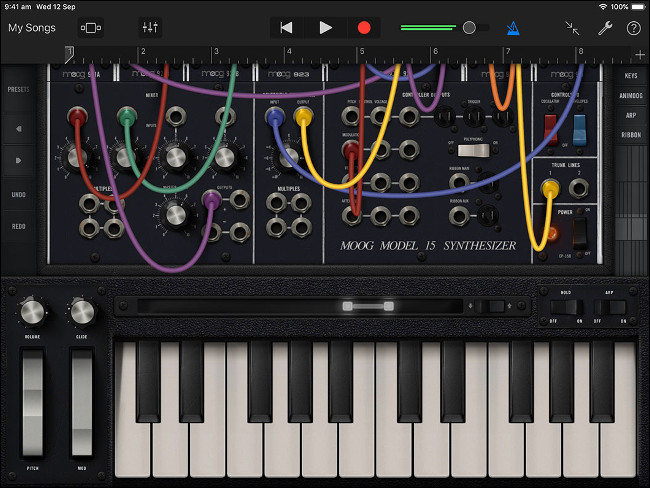You don’t need to be able to sing, play an instrument, or read sheet music to make music. With an iPhone or iPad you’ve got a mobile production suite, recording studio, and mixing desk all in one.
Make Music with the Right Apps
iPhone and iPad users have access to some of the best apps, particularly when it comes to making music. Not only is the platform relatively straightforward to develop for, but Apple’s low-latency implementation of audio technologies has also helped iOS become the platform of choice for mobile producers.
One of the most accessible apps is Apple’s own GarageBand. This first-party digital audio workstation (DAW) allows you to play, record, and program music for free. It’s perfect for messing around with virtual instruments but can also function as a mobile recording studio, virtual guitar amplifier, and drum machine for practice sessions. If you come up with something special, you can export and work on it with GarageBand for Mac (also free).

For producing electronic music, hip hop, and more technical genres, Auxy perfectly treads the fine line between ease of use and raw power. It’s free to use with an optional monthly subscription of $4.99 that provides access to hundreds of samples, additional instruments, and regular updates. It’s really simple to get started with Auxy, plus there’s a vibrant community of artists who share tracks and support each other over at the Auxy Disco forum.
KORG Gadget 2 is another highly-capable production environment. KORG has a long history of creating professional instruments, synthesizers, sequencers, and more. Gadget harnesses many of those signature sounds and, unlike Auxy, provides full support for MIDI controllers. Gadget is probably most at home on an iPad, owing to the “mixing desk” UI approach taken by its developers.

Making music doesn’t have to be a serious exercise in creative expression. It can also be a fun way to burn five minutes, as is the case with Figure. This app allows you to tap and drag your fingers across pads to manipulate pitch and sound. You can create drum loops, lay down bass lines, and improvise catchy melodies in mere minutes. It’s tough not to have fun with Figure.
This is a small sample of the most accessible production environments, but the App Store is also chock-full of virtual instruments, synthesizers and drum machines. Standout apps include:
- Animoog — a standalone touch-friendly synthesizer from the analog legends at Moog.
- iSEM — a faithful recreation of the 1974 Oberheim SEM.
- Model 15 — Moog’s first modular synth for iOS, a stunning recreation of the original Model 15.
- KORG iKaossilator — a software version of KORG’s innovative Kaossilator XY pad.
- Fingerlab DM-1 — a dedicated drum machine and beat sequencer that fits in your pocket.
Some of these apps are free, while others can be pricey. Almost all of them will go into sale at some point, so it’s worth keeping one eye on the App Store using a service like AppShopper to find the best deals.
Using Instruments and Microphones with iOS
Many iOS synthesizers and digital audio workstations (DAWs) are compatible with real instruments. These include keyboards, guitars, microphones, and audio interfaces.
MIDI Keyboards
Read the remaining 32 paragraphs
Source : A Beginner’s Guide to Making Music on iPhone and iPad











